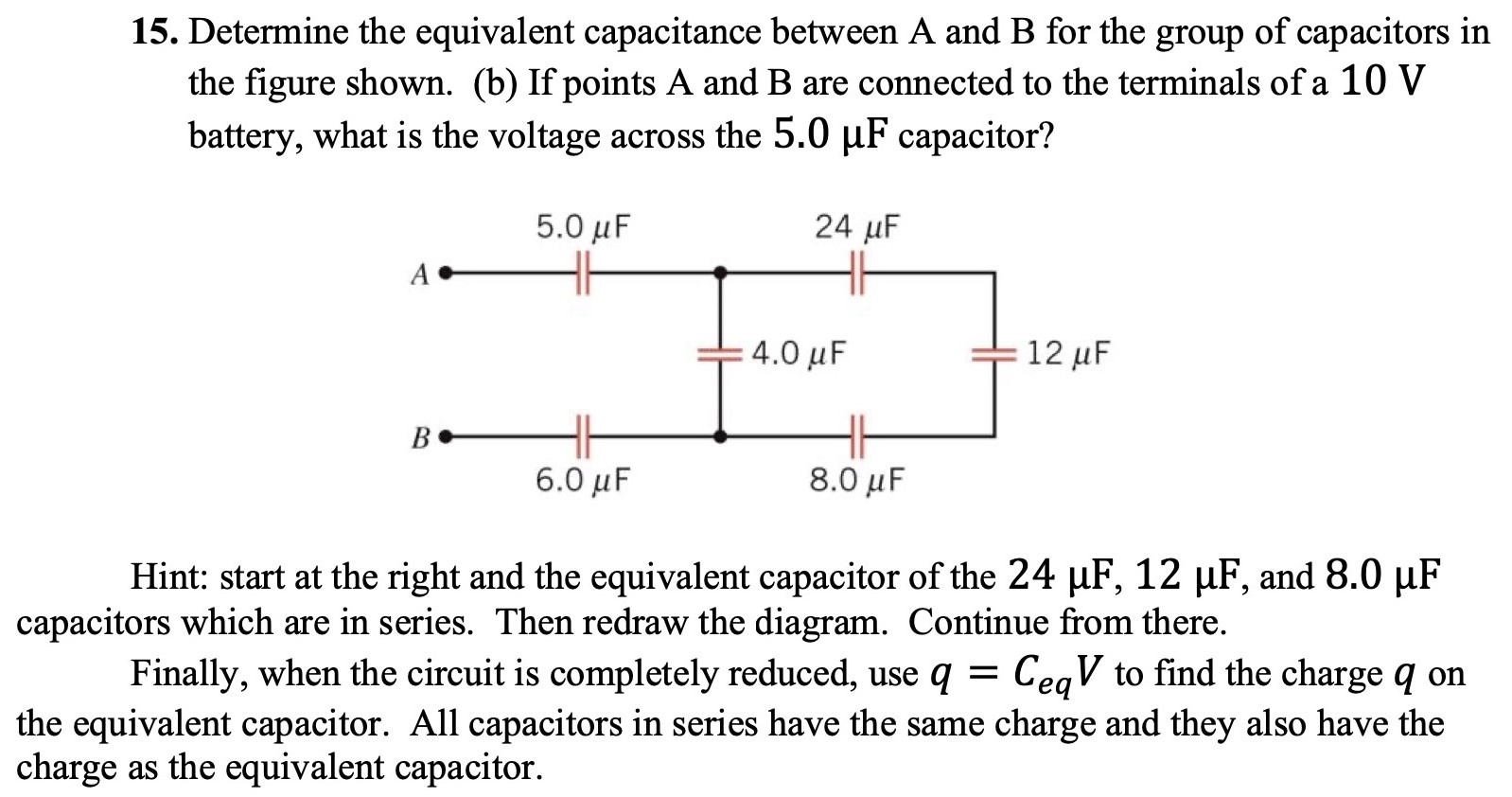Determine the equivalent capacitance between A and B for the group of capacitors in the figure shown. (b) If points A and B are connected to the terminals of a 10 V battery, what is the voltage across the 5.0 μF capacitor? Hint: start at the right and the equivalent capacitor of the 24 μF, 12 μF, and 8.0 μF capacitors which are in series. Then redraw the diagram. Continue from there. Finally, when the circuit is completely reduced, use q = CeqV to find the charge q on the equivalent capacitor. All capacitors in series have the same charge and they also have the charge as the equivalent capacitor.
